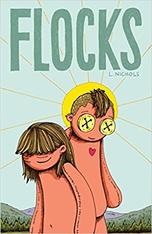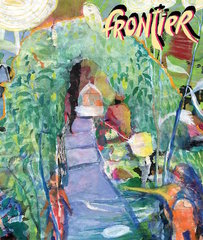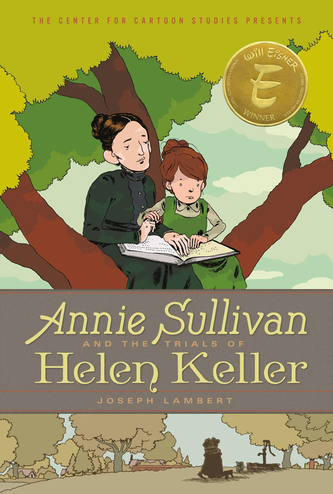|
Sigh. About eleven weeks ago, I announced that KinderComics would be taking "a four-week break." That is, back around July 23 I envisioned that KinderComics would take a brief timeout so that I could prep my Fall classes and fix some technical problems, but then come roaring back to life by August 20. My hope, as I said, was "to get KinderComics on a more secure tech footing and then resume blogging on a biweekly basis just in time for the Fall semester." Further, I promised that KinderComics would "delve into teaching in a big way come August 20-27." Out of such promises, embarrassing retractions are made. August 20 would have been one week before the launch of classes at my school (CSU Northridge). As it happens, we are now in Week Seven of classes. Of particular interest to KinderComics is my Honors seminar, English 392, devoted to "Comics, Childhood, and Children's Comics." That course underwent much revision between the time of my last substantial post about it (gulp, May 31) and the launch of class on August 27. For example, four or five of the books I envisioned teaching in 392 have in fact dropped out of the syllabus, since I had to make more room for big issues and assignments (as a course designer, I'm used to that sort of change). As I've noted before, 392 is a bit of a balancing act: the impetus for the class is the current boom in young readers' graphic novels, but the class also seeks to "address the vexed larger history of children’s comics," including, briefly, "the histories of newspaper strips and comic books vis-à-vis children." As I've said, juggling those various topics is a challenge, both practically and intellectually. And now my students and I are right in the middle of that challenge! Working with the reality of 392, as opposed to planning it in the abstract, has required me to adjust my sights and hopes, so as to do the best I can by my students. What was a notional blueprint for a course has become, as it always must, an actual class and a kind of living experiment. I have begun to worry that my approach assumes too much prior knowledge, and to remind myself that any comics course at this level needs to lay a foundation, because students very often come into these courses with no prior experience of Comics Studies, and even little experience as comics readers (I am reminded of Gwen Tarbox's wise comments about gearing her comics-teaching toward her students' needs and concerns). In any case, I have certainly been mindful, these past seven weeks, of the serious challenge we have undertaken as a class. Here is the abridged course description for 392 that I gave out on paper back on Day One (the full syllabus being online, in the form of a class website): And here is the tentative schedule, also given out on Day One (the final schedule being on the class website, and always potentially in flux): Thus far we've kept to the rough contours of this schedule. On the one hand, we need some flexibility in scheduling; OTOH, the students have volunteered for dates to serve as discussion leaders (or "launchers"), so we do have to hold to the schedule as much as we can. Per the schedule, just yesterday we hosted the first of our four scheduled guest speakers: Dr. Lara Saguisag of the College of Staten Island-CUNY. Dr. Saguisag is an experienced children's author, longtime contributor to the Children's Literature Association, and author of the brand-new study, Incorrigibles and Innocents: Constructing Childhood and Citizenship in Progressive Era Comics (Ruters UP), which I consider a watershed book in both comic strip and childhood studies. I am sure that this is going to be an important and generative work for both children's literature and comics scholars. Having read both Dr. Saguisag's article on Buster Brown and some of her work on Peanuts this past week, we joined her via Skype for a freewheeling, spontaneous conversation about childhood studies, children's book publishing in the Philippines, early comic strips, and her research methods and process, as well as her passionate childhood reading (and perhaps more ambivalent adult assessment) of Hergé's Tintin and Lewis Carroll's Alice (with a sprinkling of Roald Dahl for good measure). It was a delight to witness Dr. Saguisag thinking aloud, on her feet as it were, about serious issues, including children's reading, its possible influence, the dark side of humor, and the resonance, or one could even say terrible relevance, of her book's findings for America today, an America once again obsessed with self and Other, inclusion and exclusion, and what it means to be a citizen. Speaking personally, I can't thank Lara enough for her forthrightness, openness, and thoughtfulness, and for her generous, accessible way with everyone in our class. It was a great session. By semester's end, we will have hosted, assuming all goes according to plan, three more speakers, including Skype guests Carol Tilley and Gina Gagliano and in-person visitor Jordan Crane (We Are All Me). To say that I'm looking forward to these sessions would be a huge understatement! What else have we been up to in 392? Well, besides delving into Peanuts and (via Lara Saguisag's work) early American newspaper strips, we've also discussed: the cultural status of comics in the US, in particular the comic book as defined by the scandals of the mid-20th century (this will lead to Dr. Tilley and other sources in a couple of weeks); the children's graphic novel boom (and the current status of graphic novels in public libraries); the introductions to two landmark scholarly books that came out last year, Picturing Childhood: Youth in Transnational Comics (ed. Heimermann and Tullis) and Graphic Novels for Children and Young Adults (ed. Abate and Tarbox); Joe Sutliff Sanders's "chaperoning theory" regarding the difference between comics and picture books, followed by Spiegelman and García Sánchez's Lost in NYC (2015) vis-à-vis De la Peña and Robinson's Last Stop on Market Street (also 2015); and Karasik and Newgarden's How to Read Nancy (2017), alongside, of course, a fair serving of Ernie Bushmiller's Nancy (and Jared Gardner on the history of comic strips). So, it's been a heady brew: history, current events, comics form, constructions of childhood, and more. And we're not even halfway through! Given all this, and three other courses to teach, in addition to writerly, editorial, and service commitments on multiple fronts, I'm forced to admit that maintaining even a biweekly blog is probably going to be beyond me between now and December. On top of that, the technical problems I alluded to back in July have not changed at all (Weebly continues to be anathema to my university), and I may therefore have to make some tough choices, and soon. But KinderComics is not going away; I hope to be back with reviews before Halloween. I continue to read children's and young adult comics (as well as many other sorts of comics) with the usual trancelike fascination, and look forward to sharing my thoughts here -- and, I hope, to hearing from my readers! PS. They are not "children's" texts per se, not in the usual, expected sense anyway, but I'd be remiss if I didn't point my readers to two extraordinary works in comics that I've read this past week, one a memoir of childhood to adulthood, the other a story about childbearing and birthing:  L. Nichols's booklength graphic memoir, Flocks, tells a story of growing up queer, and wracked with guilt, in a fundamentalist community. It's not a screed; it's not an act of revenge. Rather, it's an act of love, through and through, one that transmutes pain into courage and understanding. An achingly personal testimony to the work of transitioning and self-fashioning, it finds its own visual language, its own distinctive vocabulary of braided metaphors, to tell a story of self-in-community, of what it means to find yourself within (and against) your "flocks." Brave, tender, and astonishing. Bless publisher Secret Acres for bringing us the completed version of this long-awaited project.  Just as astonishing, though wholly different, is Lauren Weinstein's graphic memoir of her second childbearing and birthing experience, "Mother's Walk," which makes up the latest issue (No. 17) of Youth in Decline's outstanding quarterly anthology, Frontier. "Mother's Walk" is an explicit and revealing remembrance of childbearing and delivery, with all its rigors, emotional, psychological, and of course physical. I have been anxious to see a graphic memoir like this for some time, one that depicts birth and mothering in raw but loving detail. This is a startling, eloquent, and, as always with Weinstein, unpretentious and gutsy piece of work, one that (she says) anticipates a longer book about childbearing and child-rearing. I can't wait. I recommend these two titles as emphatically as I can recommend any art. PPS. It’s back in print: Joe Lambert’s Annie Sullivan and the Trials of Helen Keller. Ohmigosh, yes.
1 Comment
10/10/2018 12:10:22 am
You stopped me in my tracks as I used to work at Buster Brown Apparel on the Peanuts clothing line. What a small world - HA! Thanks for the catch-up! e
Reply
Your comment will be posted after it is approved.
Leave a Reply. |
Archives
June 2024
|




 RSS Feed
RSS Feed
